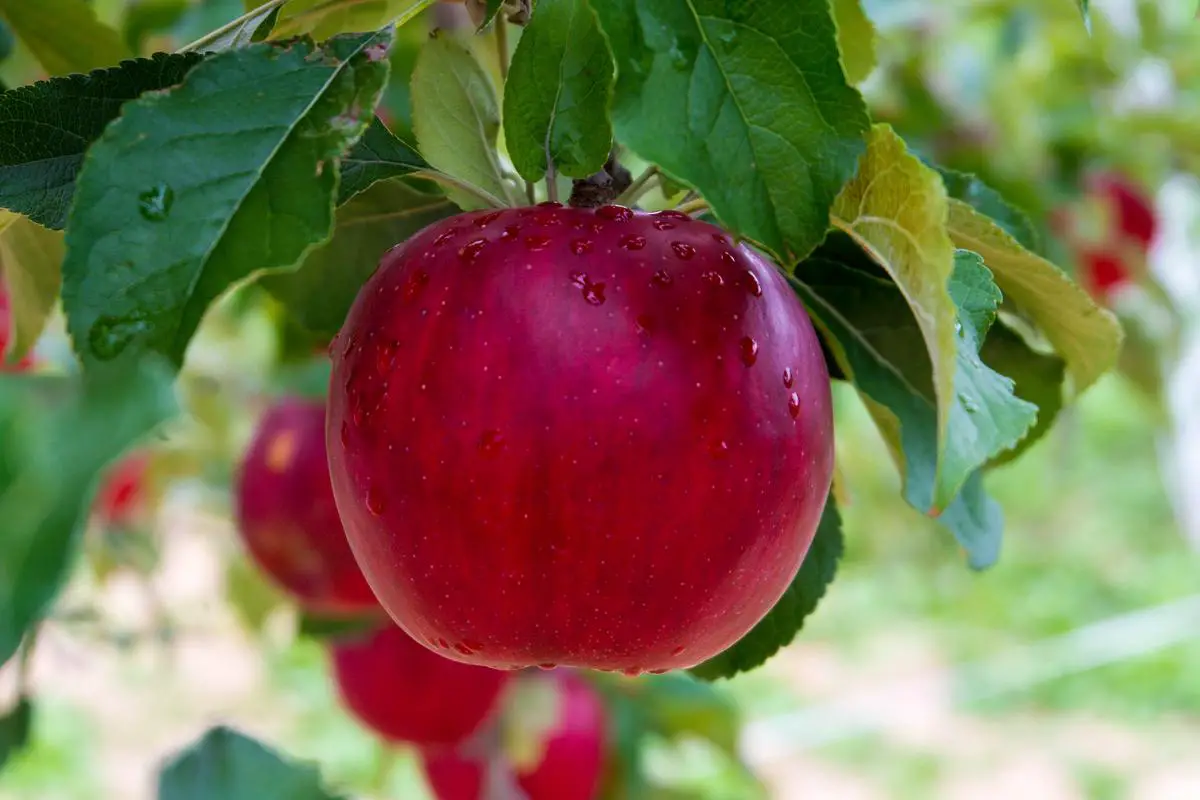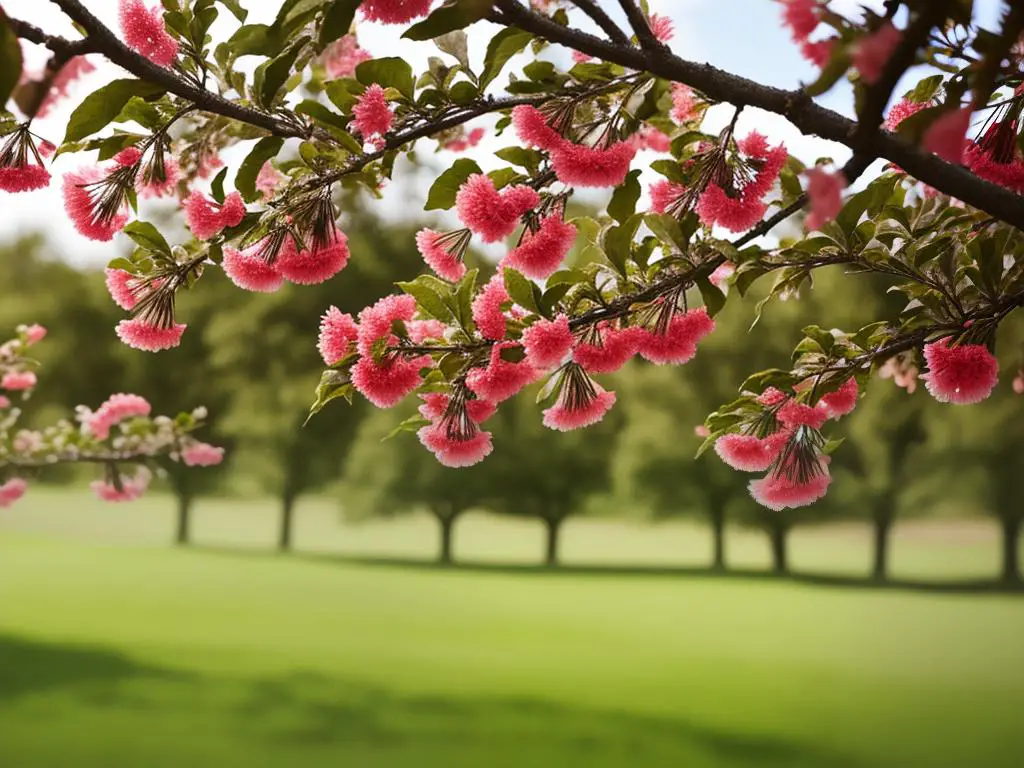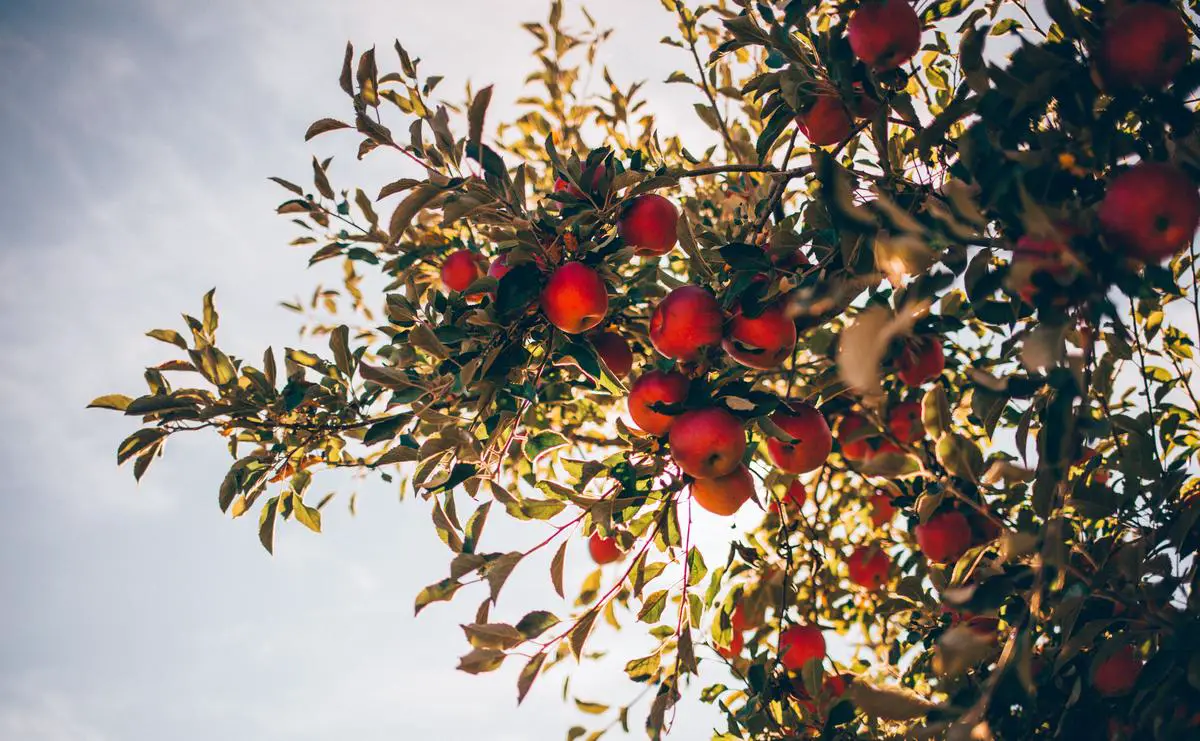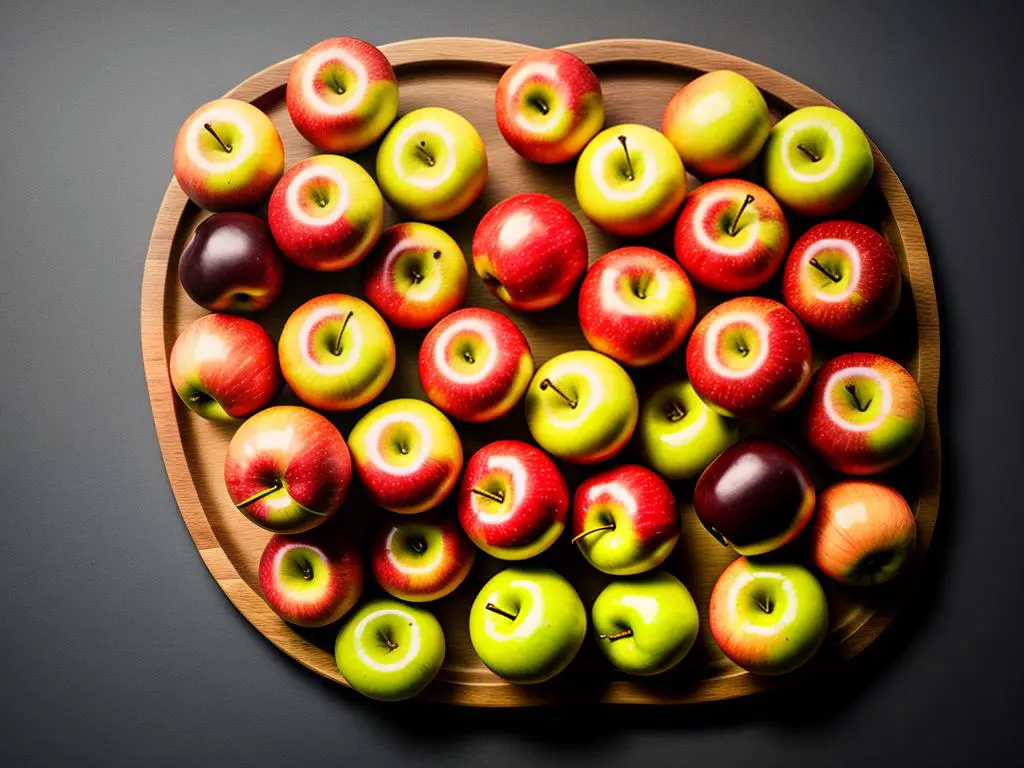Welcome to a delightful journey of discovery into the fascinating world of apple trees. It’s natural for us to simply marvel at the ripe, juicy apples hanging from the branches. Sometimes, however, we overlook the remarkable life and growth cycle of the tree itself which gifts us this delightful fruit. We will traverse through the various stages of an apple tree’s life, from winter dormancy to springtime blossoming, summer fruit development and the much-anticipated autumn harvest. We shall also explore the key role played by environmental factors such as sunlight and water.
Fascinatingly, the apple tree’s journey is not a solitary one. The unsung heroes, the bees and other insects, inadvertently play a critical role in pollination – a process vital for fruit production. Furthermore, techniques like grafting and pruning provide a comprehensive understanding of horticulture, and the processes to manage growth and boost fruit yield. And for those with a greater appetite for knowledge, we take a deeper look into the complexities of growing apple trees from a seed.
Last but not least, we explore the diverse world of apple varieties cultivated in the United States – a celebration of nature’s variety, with each exhibiting unique attributes regarding size, color, taste, and best uses. So, without further ado, let us embark on this detailed journey that nurtures an appreciation for the dynamic lifecycle and beautiful diversity of apple trees.
Understanding the Apple Tree Growth Cycle
Understanding the Apple Tree Growth Cycle: From Dormancy to Harvest
Apple tree growth can be divided into several key stages, each influenced by a variety of environmental factors such as sunlight, water, and temperature.
Winter Dormancy and Preparation for Spring
The apple tree’s growth cycle begins with winter dormancy, a vital period in which the tree conserves energy and prepares for the coming spring. During winter, apple trees appear lifeless as they shed their leaves and enter a period of rest. However, below the surface, the tree undergoes necessary biological processes, such as nutrient accumulation.
Spring Awakening and Flowering
With the arrival of spring, the apple tree ends its dormancy and enters a period of rapid growth. Sunlight and increasing temperatures trigger the tree to direct its stored nutrients towards budding. The first buds to emerge are leaf buds, followed by blossom buds. These blossoms, also known as apple blossoms, are vital for apple production as they contain the tree’s reproductive organs. Their successful pollination – by bees, mostly – will determine the quantity and quality of the apple harvest.
Summer Fruit Development
After successful pollination, the apple tree enters the fruit development stage in the summer. The fertilized flower blossoms transform into tiny fruitlets. During this phase, adequate sunlight and water are essential for proper fruit growth. The tree’s leaves also play a crucial role, as they produce food for the growing apples through photosynthesis.
Watering should be consistent during the summer months, as irregular or inadequate watering can result in smaller, less juicy apples. Care should also be taken to protect the growing apples from pests and diseases.
Autumn Harvest and Ready for the Next Cycle
Apple harvesting typically begins in late summer or early autumn, depending on the apple variety. It is crucial to harvest apples when they are fully ripe for the best flavor and storage potential.
After harvest, the falling autumn leaves signal the tree’s preparation for the coming winter and the start of another growth cycle. The tree will once again enter a period of dormancy, conserving energy and storing nutrients for the following spring blossoming.
The Impact of Environmental Conditions on the Growth of Apple Trees
To flourish and bear fruit, apple trees need an ample amount of sunlight for photosynthesis. Thus, ensure that the location chosen for planting receives a great deal of sunlight throughout the day.
Also crucial for the health of apple trees is a steady supply of water, especially during the crucial stage of fruit production in the summer. While apple trees are somewhat resilient against drought, fluctuating watering routines could have detrimental effects on fruit growth and the overall health of the tree.
Temperature, too, exercises significant influence, with each stage in the life cycle of an apple tree requiring distinct temperature ranges to initiate the transition to the subsequent one. Chilly winter temperatures are necessary to trigger the dormancy stage, while the warmth of spring and summer promotes growth and fruit production.
Meticulous care and disease control, inclusive of pruning, substantially impact the growth and yield of apple trees. Regular upkeep ensures the optimal distribution of nutrients, stops diseases from spreading and ward off pest infestations, resulting in a healthy apple harvest in abundance.

The Power of Pollination
The Essential Role of Pollination in the Lifecycle of Apple Trees
One of the most essential stages in the life cycle of an apple tree is pollination. This period is where the magic happens; the moment when a tree is given the chance to bear the delicious, crisp fruit that we so often associate with orchards and apple pies.
Pollination begins when pollen is transferred from the anther, the male part of a flower, to the stigma, which is the female part. In the case of apple trees, this transfer is a crucial part of fertilization, leading to the production of fruit.
The apple tree operates on a system called cross-pollination, meaning that for successful pollination to occur, the pollen from a flower on one apple tree must be transferred to a flower on a different apple tree. This genetic diversity contributes to the vigour and disease resistance of apple trees.
Flying Helpers: The Bees’ Role in Apple Tree Pollination
As nature would have it, apple trees do not accomplish this process alone—they have quite a few helpers. The most notable, perhaps, are the bees. Bees, especially honey bees, bustle from tree to tree in a never-ending quest for nectar, playing a vital part in apple tree pollination without even understanding their essential role.
As bees travel from flower to flower collecting nectar, they inadvertently carry pollen on their bodies, allowing for the cross-pollination necessary in apple tree life cycle. Some studies have indeed revealed that each individual bee may visit thousands of flowers in just one day, making them superbly efficient pollinators.
Insects and Wind as Pollinators
Besides bees, several other insects may play a part in apple tree pollination. Different types of flies, beetles, and even ants can potentially transfer pollen from one flower to another. However, these insects may not be as efficient as bees given their feeding and foraging habits.
Moreover, wind can also act as a pollinator for apple trees, although it’s much less effective than bees or other insects. As the wind blows through an apple orchard, it can pick up loose pollen from open flowers and potentially drop it onto the stigma of another flower.
However, the wind is unpredictable and uncontrolled. It does not have the same precision and efficiency as bees, which can move directly from one flower to another. But in some circumstances, where insect populations may be low or other environmental factors come into play, wind pollination could be a valuable fallback option for apple trees.
Fruit Production: Pollination’s Final Reward
Post a successful pollination, apple trees step into the concluding phases of their life cycle, notably, maturation and fruit production. This process entails the growth of the apple as a result of the pollinated flowers developing into fruit, driven by the fertilized seeds at the heart of the fruit. Without successful fertilization, the apple ceases its maturation too early and may shake off the tree prematurely.
Indeed, the continuity of the apple tree’s life cycle year after year, generating copious fruit yields, is maintained by the important process of pollination. It underlines the significant role of pollination and illuminates the awe-inspiring interdependence of nature.

Grafting and Pruning Techniques
Integral role of Grafting & Pruning in the Life Cycle of an Apple Tree
Grafting and pruning play an imperative role in the life cycle of apple trees. These meticulous techniques are not only essential for generating new apple variants but also crucial for regulating the size of the trees.
Grafting Apple Trees
In the world of horticulture and specifically in apple tree cultivation, grafting is a technique used to create new apple tree varieties. This is usually achieved by surgically joining two plants so that they grow together as one. In apple trees, grafting involves taking a scion, or twig, from the desired apple variety and attaching it to the rootstock of a different apple tree.
The process includes making precise cuts in both the rootstock and scion so they can be seamlessly joined together. The grafted part is then sealed with grafting wax to prevent it from drying out and to protect it from the elements. Over time, the grafted region heals, and the scion begins to grow with the rootstock, resulting in a new variety of apple tree.
Aside from creating new apple varieties, grafting is also used to control tree size. By grafting selected scions onto dwarfing or semi-dwarfing rootstocks, it’s possible to keep apple trees at manageable sizes, making it easier to care for them and harvest the fruits.
Pruning Apple Trees
Pruning is another essential practice in apple tree cultivation. For the tree to grow healthily and produce an abundant and quality harvest, it needs regular pruning. Pruning involves cutting back parts of the tree, such as unnecessary branches and twigs.
The main purpose of apple tree pruning is to improve light penetration and air circulation throughout the tree. This can reduce the likelihood of disease, increase fruit quality, and improve overall tree health. Pruning also helps manage the tree’s size and shape, making it easier for harvesting and maintenance.
Seasonally, the best time for major pruning tasks is late winter or early spring, before new growth begins but when it will start soon. This is when the tree is dormant, reducing the risk of infection and giving the tree time to recover before the growing season begins. The timing for pruning can also vary based on the specific needs of the tree.
Myriad pruning techniques can be adopted for apple trees depending on their age, health, and desired outcome. When pruning, one should remove diseased, dead, or damaged branches first. Then, you can cut back branches that show signs of vertical growth and keep those that maintain horizontal growth, as these branches are more likely to bear fruit.
Conclusion
Taking the time to understand and perfect the cultivation techniques of grafting and pruning can profoundly impact the overall health of an apple tree, including its size and yield of fruit. To some, these techniques may appear daunting, but they are integral to the life cycle of an apple tree, offering hobbyists and enthusiasts the opportunity to cultivate new apple varieties and maintain healthy, productive trees.

Photo by miracleday on Unsplash
Growing Apple Trees from Seed
The Journey of an Apple Tree: A Closer Look at the Life Cycle
Venturing into the process of growing apple trees from seeds provides an intimate journey through the interesting life cycle of apple trees. While the process can be demanding and requires patience, it presents enthusiasts with a firsthand experience of the delicate interplay between plant life and the environment.
Germination: The Humble Beginnings of an Apple Tree
Everything starts with a seed. Apple seeds, also known as pips, need stratification – exposure to cold – before germination can occur. Typically, apple seeds need cold exposure of around 6 to 8 weeks before they can germinate. This mimics winter conditions, telling the seed that it’s time to start a new growth cycle.
To simulate these conditions, try placing apple seeds in a plastic bag with moist sand or peat moss and refrigerate it for 6 to 8 weeks. After this cold treatment, the seeds can be planted in pots filled with a balanced potting mix. The seeds will sprout in about 2 weeks, developing into young seedlings.
Sapling Development and Growth
Once the apple seeds have germinated, they become saplings and begin the next stage of their life cycle. This phase lasts for several years as the sapling grows into a young tree, developing a robust root system, sturdy trunk, and branches.
Sunlight, water, and nutrient-rich soil are essential for this growth phase. The sapling also starts to produce its set of leaves, allowing it to photosynthesize and generate food for further growth.
The Maturation Process and Fruit Production
The maturation period for apple trees varies widely depending on the apple variety and environmental conditions. Most apple trees start to produce fruit in their 5th to 7th year, but apple trees grown from seed can take anywhere from 7 to 10 years before they bear fruit.
As the tree matures, its annual cycle starts to emerge, with flowers appearing in spring. These blossoms are pollinated, forming the initial apple fruits. Through the summer, the apples grow and ripen, readying for harvesting in late summer to early fall. After the apples are harvested, the tree prepares for winter, losing its leaves and entering a dormant period.
Understanding the Process of Growing Apple Trees from Seed
Planting apple trees from seeds invites its own unique set of challenges. One noteworthy consideration is that trees generated from seeds do not effectively “come true.” In simple terms, this means that the subsequent tree and its fruit may not mirror the characteristics of the parent tree.
Grafts or cuttings yield a clone of the parent tree, whereas seeds carry the genetic material from both parent trees. This consequently leads to substantial variations, and the trees that emerge might bear smaller or less desirable apples. Moreover, the aspect of pollination plays a crucial role, necessitating cross-pollination in most cases to yield suitable fruit.
However, the silver lining to this process is the potential for discovering a new, unprecedented apple variety. While the challenges and extensive period may seem daunting, the opportunity to see the life cycle from seed to fruit can truly be an amazing experience for any apple tree aficionado.

Varied World of Apple Varieties
Exploring the Early Season Appeal of the Granite Beauty Apple
Among the pioneer apple varieties that originated in the United States, the Granite Beauty apple, native to New Hampshire, stands out. This apple kind has the distinction of being one of the first fresh fruits enjoyed after a prolonged winter, owing to its early ripening period. These apples are identified by their yellow skin, faintly tinged with a red blush.
With their juicy, slightly sweet, and tart taste, Granite Beauty apples are adored by many. They can be savored fresh, yet their tart flavor also makes them excellent for cooking and baking. To ensure optimal flavor, these apples should be harvested in the late summer, precisely when their color transforms from a shiny green to a golden hue with a mild blush.
Winesap Apple: The Late Harvest Star
The Winesap apple variety is well-known in the U.S. Originating from New Jersey, this apple stands out in terms of the late maturity period in the apple life cycle. Its harvest season does not begin until late fall, making it a highly anticipated apple variety during the late harvest period.
Its highly aromatic and tart-sweet flavor profile is what gives the Winesap apple its name and is perfect for cider-making due to its strong, wine-like flavor. This apple variety is widely versatile and is also excellent for baking, eating out of hand, and preserving. Harvesting should occur when the apple’s skin has reached a rich red color.
Honeycrisp Apples: The Popular Favorite
The Honeycrisp apple variety is one of the most popular in America due to its unique characteristics. This variety originated in Minnesota and is famous for its extremely crisp and juicy flesh and well-balanced sweet-tart flavor.
Honeycrisp apples have a distinctive structure and their cells are larger than those of other apple varieties. This is what gives the Honeycrisp its characteristic crisp texture. The ideal use for these apples is simply eating them fresh, however, they also work well in salads and sandwiches.
The Honeycrisp’s life cycle reaches maturity in the mid-season, between the Granite Beauty and the Winesap. Its harvest peak is usually in late September. The best time to pick a Honeycrisp apple is when it has transitioned from a green to a fully red hue.
Understanding the life cycles of different apple varieties
Understanding the life cycles of different apple varieties not only gives a fascinating insight into fruit tree cultivation but also helps you plan for harvesting and utilizing these versatile fruits. Each variety has its own unique maturation timing, flavor profile, and ideal uses, making the world of apples a truly diverse and interesting one.

As we culminate our journey with apple trees, we can now reflect upon the impressive intricacy of its lifecycle, the symbiotic relationship it shares with mother nature, and the stunning spectrum of apple varieties it offers us. The fascinating roles of sunlight, water, and pollinating insects in supporting the apple tree life cycle underscore the interconnectedness of nature. Horticultural techniques such as grafting and pruning not only enrich our understanding but showcase the possibility and promise for ongoing growth and improvement.
Growing apple trees from seeds is an intricate process, yet the endeavours reap rich fruits of knowledge and literal fruition. The vast varieties of apples grown across the United States, each with their unique attributes, demonstrate nature’s abundance and diversity. Knowledge of multiple types broadens our perspective, taste as well as cultivation techniques – breeding a profound respect and increased enthusiasm for these fruit-bearing wonders. This exploration empowers us with deeper insights and an enhanced appreciation of apple trees – their journey, their growth, and their exceptional contribution to our plate and palate.
